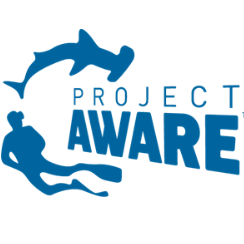With climate change causing ocean temperatures to rise, and ice sheets and glaciers to melt, the impacts on the ocean are becoming more apparent. These impacts include changes in ocean temperature and circulation patterns, more frequent extreme weather events and tropical cyclones becoming more intense, rising sea levels and storm surges affecting coastal ecosystems and coastal communities. These changes and impacts not only pose a threat to coastal communities, but could drastically change marine ecosystems, and therefore need to be monitored.
Until now, marine scientists have relied on a range of disjointed tools to manage, prepare and analyze datasets collected from different instruments to investigate trends, which can be challenging to say the least. An integrated data analytics platform alleviates these challenges by providing a platform that enables the merging of scientific resources. It facilitates the analysis of large volumes of data, including multi-variate measurements, as well as multiple datasets collected by various instruments over a broad spatio-temporal scale.
The Cloud Platform for Big Data and AI in Ocean Science
The Institute of Oceanology, Chinese Academy of Sciences (IOCAS) recently launched China's first cloud-based integrated data analysis and artificial intelligence (AI) platform for ocean science. The Cloud Platform for Big Data and AI in Ocean Science serves as an information pool of integrated updated oceanographic data collected over a wide spatio-temporal range. The oceanographic data portal, described as 'the gateway to oceanographic data', is an interactive analytics platform for large-scale data.
The cloud platform currently contains 353 datasets collected from ship-based surveys, 59 datasets of observation measurements collected from ships whilst moored, 6 datasets collected by remote sensing satellites, more than 10 datasets consisting of data that has been reanalyzed and internationally shared, and 500 sets of integrated ocean and atmospheric science software.
OceanWorks
NASA's cloud-based data analysis tool, OceanWorks, is another online integrated data analysis platform that allows the ocean science community to view imagery and analyze data related to sea level rise. OceanWorks facilitates the merging of datasets collected by several NASA open-source, big data projects. The cloud-based integrated data analysis simplifies workflow for marine scientists, enabling them to analyze large volumes of data without the normal challenges. This will prove to be an invaluable web-based tool for quickly and efficiently analyzing data intensive oceanographic observations, such as those collected in NASA's Surface Water and Ocean Topography (SWOT) mission, which is expected to generate more than 20PB of observational data during the course of its 3-year nominal mission.
Analyzing big datasets, especially those collected over a broad spatio-temporal scale, can be challenging for marine scientists. The introduction of cloud-based data analytics and AI tools offers some welcome relief, allowing scientists to focus on their research rather than being bogged down with the tedious task of data preparation, security and management. It will also help give us a clearer picture of the changes that are occurring in our oceans so that we can implement climate mitigation and adaptation strategies to protect vulnerable ecosystems and communities.
Sources
Eward M. Armstrong et al. An Integrated Data Analytics Platform. An Integrated Data Analytics Platform. Front. Mar. Sci., July 2019. https://doi.org/10.3389/fmars.2019.00354
CGTN. China's cloud platform in ocean science starts operation. April 2021.










